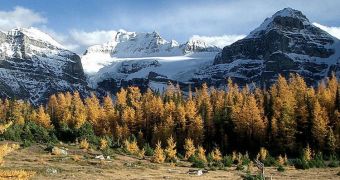A group of investigators in the United States says that the rates at which snowpacks on the Rocky Mountains collapse are higher than any other recorded over the past centuries. The difference can only be attributed to man-made global warming, and the climate change it induces.
The study focused on how the ices on the mountain chain evolved over the past 30 years. It found that the decline was sharper than it has been in hundreds of years, suggesting that several processes might be at work to undermine the snowpacks.
In past studies, the decline had been attributed to factors such as earlier snow melting, due to unusual springtime warming, or more precipitation shifting to rain rather than snow. These phenomena are caused by global warming as well, both in the United States and the rest of the world.
Scientists with the US Geological Survey (USGS) says that snowpack decline rates will undoubtedly continue to worsen over the next decades, and well into the next century. Water supplies will be the worst affected, they predict, since many rivers gain their water from runoffs in these glaciers.
The team says that more than 70 million people living in the western United States are dependent on these snowpacks for 60 to 80 percent of the water they consume. As more and more ice is lost, water flows will diminish in all rivers.
This could potentially necessitate the introduction of rationing in major cities such as Los Angeles, the investigators add. “This scientific work is critical to understanding how climate change is affecting western water supplies,” explains Ken Salazar, the US Secretary of the Interior.
“It helps land managers adapt to changing conditions on the ground, assists water managers with planning for the future, and gives all of us a better understanding of the real impacts that carbon pollution is having on our resources and our way of life,” the official goes on to say.
The new study was carried out after experts reconstructed the evolution of Rocky Mountain snowpacks using no less than 66 tree-ring chronologies. The dataset had a resolution of 500 to 1,000+ years.
Together with experts at the University of Arizona, Washington University, University of Wyoming, and the University of Western Ontario, the USGS team managed to compare former and current decline rates, and found a significant difference.
“Over most of the 20th century, and especially since the 1980s, the northern Rockies have borne the brunt of the snowpack losses,” explains the lead author of the study, USGS scientist Gregory Pederson.
“Most of the land and snow in the northern Rockies sits at lower and warmer elevations than the southern Rockies, making the snowpack more sensitive to seemingly small increases in temperature,” he adds.
“Also, winter storm tracks were displaced to the south in the early 20th century and post-1980s. Forest fires were larger, more frequent and harder to fight, while Glacier National Park lost 125 of its 150 glaciers,” he concludes.

 14 DAY TRIAL //
14 DAY TRIAL //